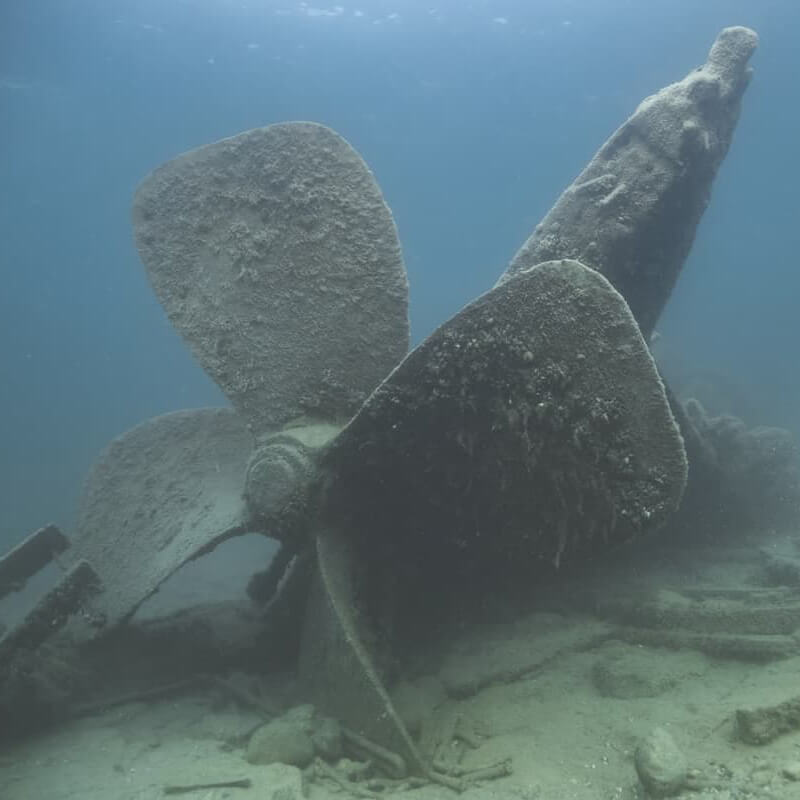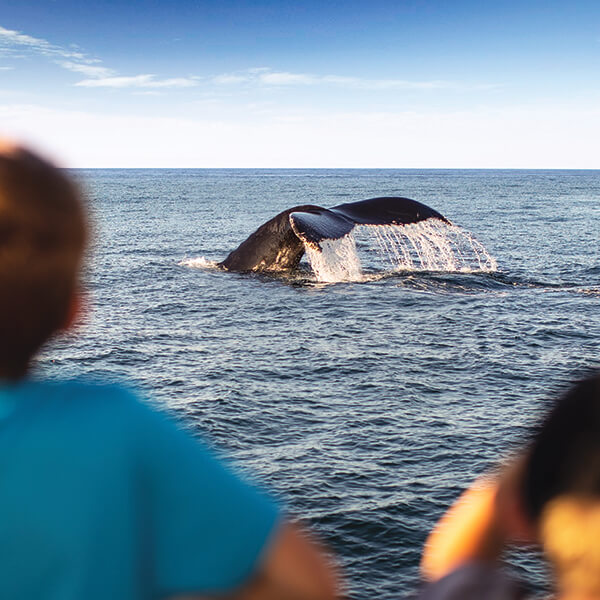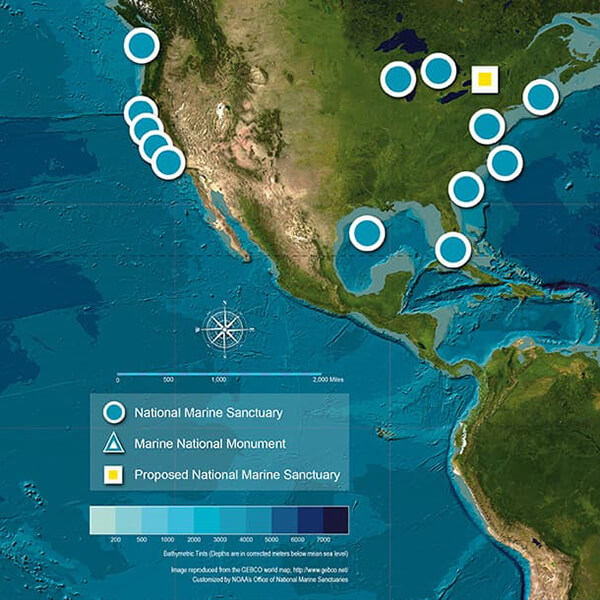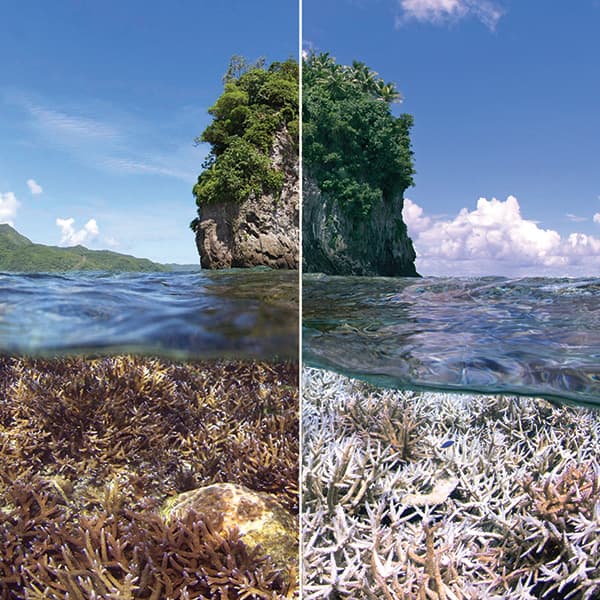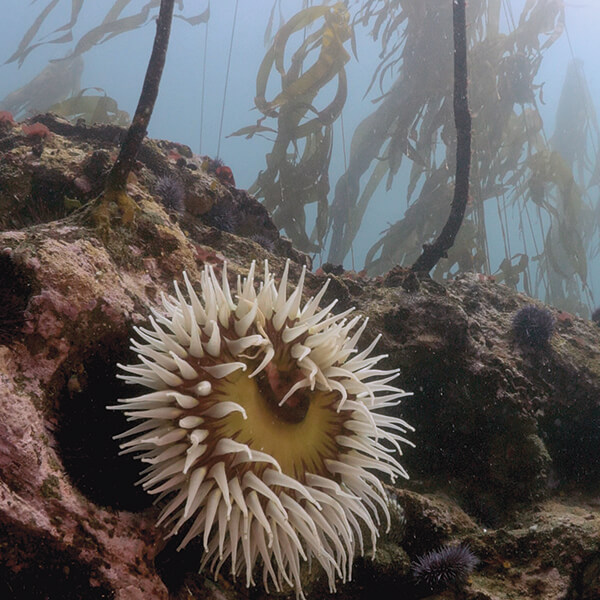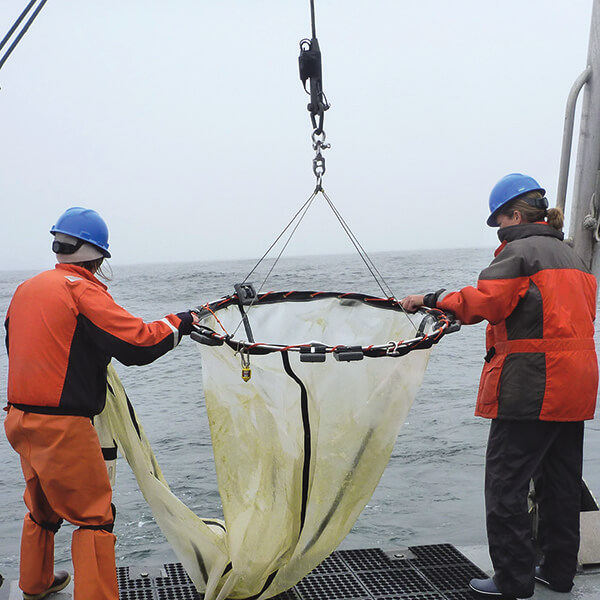Earth Is
Blue
Our Blue Heritage
From the ancestral environments and archaeological remains important for living native Hawaiian culture, to the “Ghost Fleet” in Maryland’s backyard, your National Marine Sanctuary System works diligently to protect our nation’s maritime heritage. While it is our job to protect these resources, it’s the people who are connected to them that keep the memories of Our Blue Heritage alive today.
Get into the Blue
Water is a thread that connects us all, and your national marine sanctuaries are places for everyone to get outside and enjoy together. We balance the protection of marine ecosystems, maritime history, and cultures, with allowing responsible enjoyment and compatible resource use within sanctuaries. The majority of waters are open for sustainable recreation, including surfing, diving, snorkeling, kayaking, canoeing, sailing, fishing, tidepooling, visiting educational centers, and watching spectacular wildlife. What are you waiting for: Get into the Blue!
Treasures of the Blue
Which types of reefs exist throughout the sanctuary system, and what is the difference between a coral atoll and a coral barrier reef? How did a mountain form underwater, and what sort of wildlife can you find there? How do shipwrecks become a living part of the marine environment? Explore the Treasures of the Blue around the National Marine Sanctuary System to find the answers to these questions and more!
Changing Sanctuaries
All water on Earth is connected—in the ocean, lakes, rivers, streams, and glaciers—and changes to these water resources can have a major impact on people's lives. The ocean dominates Earth's surface. Just as the heart circulates blood and regulates the body's temperature, the ocean controls the circulation of heat and moisture throughout the climate system.
Life in the Blue
National marine sanctuaries and marine national monuments protect vital habitats that support a variety of wildlife. From mangroves, seagrasses, salt marshes, and kelp forests, to our fragile coral reefs—shallow and deep—the work we do is all about protecting Life in the Blue.
Explore the Blue
There’s still so much to learn about the wildlife and ecosystem processes in the ocean and Great Lakes. Exploring sunlit waters, the twilight zone, and deep-sea habitats has led to several new species discoveries, and eavesdropping on whales has revealed new insights that could help us take steps to reduce threats to marine mammals, like ship strikes and entanglement. Discover how technology and partnerships help us Explore the Blue.
The Blue and You
Who's the key to protecting the ocean and Great Lakes? You are! Volunteers, visitors, and partners make the National Marine Sanctuary System a success. You help us improve access to these special ocean and Great Lakes places, remove debris and keep the ocean healthy, and more. Plus, through virtual reality we're bringing national marine sanctuaries to more people than ever before. It's all part of The Blue and You.


